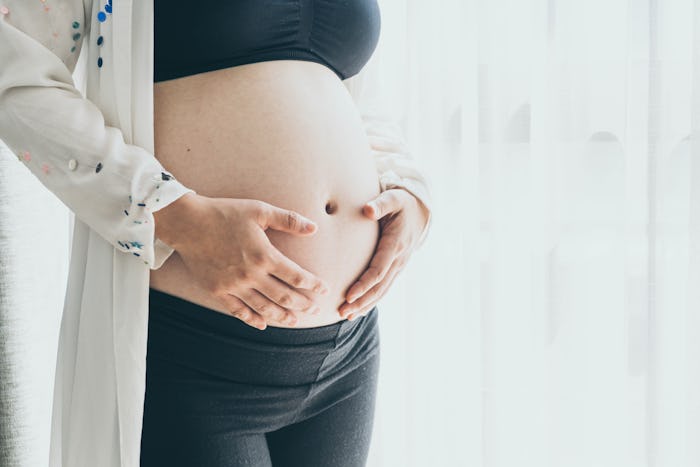News

Fertility Rates In The U.S. Have Fallen To An All-Time Low, According To The CDC
Women in the United States appear to be having fewer children than ever before, according to a new report from the National Center for Health Statistics at the Centers for Disease Control and Prevention (CDC). In fact, in examining birth certificate data, the agency found that fertility rates in the United States have continued to drop, hitting an all-time low in 2018.
"The 2018 general fertility rate fell to another all-time low for the United States," the CDC's National Center for Health Statistics said in their report. The general fertility rate is defined as the number of births per 1,000 women age 15 to 44. The agency found a 2 percent decline in the United States' general fertility rate from 2017, when it was reported to be 60.3 births per 1,000 women, and 2018, when it was 59.1 births per 1,000 women.
When separating the data by race, researchers found a slightly larger decline in the fertility rate for Hispanic women. While fertility rates were reported to have declined by 2 percent among both white and black women, Hispanic women exhibited a 3 percent drop from 2017 to 2018.
But although Hispanic women were reported to have seen the biggest drop in their fertility rate, they were still found to have the highest fertility rate overall at 65.9 births per 1,000 women. Non-Hispanic black women were reported to have the second highest rate at 62 births per 1,000 women with non-Hispanic white women following at 56.3 births per 1,000 women. The report did not discuss the fertility rate found among Asian women in the United States.
But the nation's general fertility rate wasn't the only thing researchers found to have hit a record low. "Teen childbearing also declined to record lows overall," the report noted. Researchers found that the nation's teen birth rate had dropped 7 percent over the same period, hitting 17.4 births per 1,000 females age 15 to 19. In examining data regarding teen births by race, researchers found they declined by 4 percent for black teenagers and 8 percent for both whites and Hispanics.
According to a separate report put out in May by The Pew Research Center, 2018 was the fourth consecutive year that researchers saw fertility rates in the United States hit record lows. However, Pew Research Center senior researcher Gretchen Livingston noted that a "slight decline" in the number of women whose ages fall within the peak childbearing years of 20 to 34 may be impacting the general fertility rate. She's also argued that "the record-low [general fertility rate] cited by the government is primarily a result of a decline in birthrates among women younger than 35."
Recent government data appears to support Livingston's argument. In fact, provisional data summarized earlier this year by the National Vital Statistics System found that provisional birth rates for women age 15 to 34 declined from 2017 to 2018. In that same time period, provisional birth rates for women age 35 to 44 were reported to have risen.
According to CNN, the rise in births by women over the age of 35 may also be linked to an increase in preterm births found by the CDC. In their most recent report, the CDC's National Center for Health Statistics reported that preterm births rose from being 9.93 percent of all births in 2017 to being 10.02 percent in 2018.
In a separate report released in January, the CDC noted that, after years of decline, the nation's total fertility rate, which measures the hypothetical number of children women are likely to have based on current fertility patterns, is not at a level that would enable the nation to replace its existing population. While some may view this as an economic warning, those concerned about resource consumption likely see it as positive.